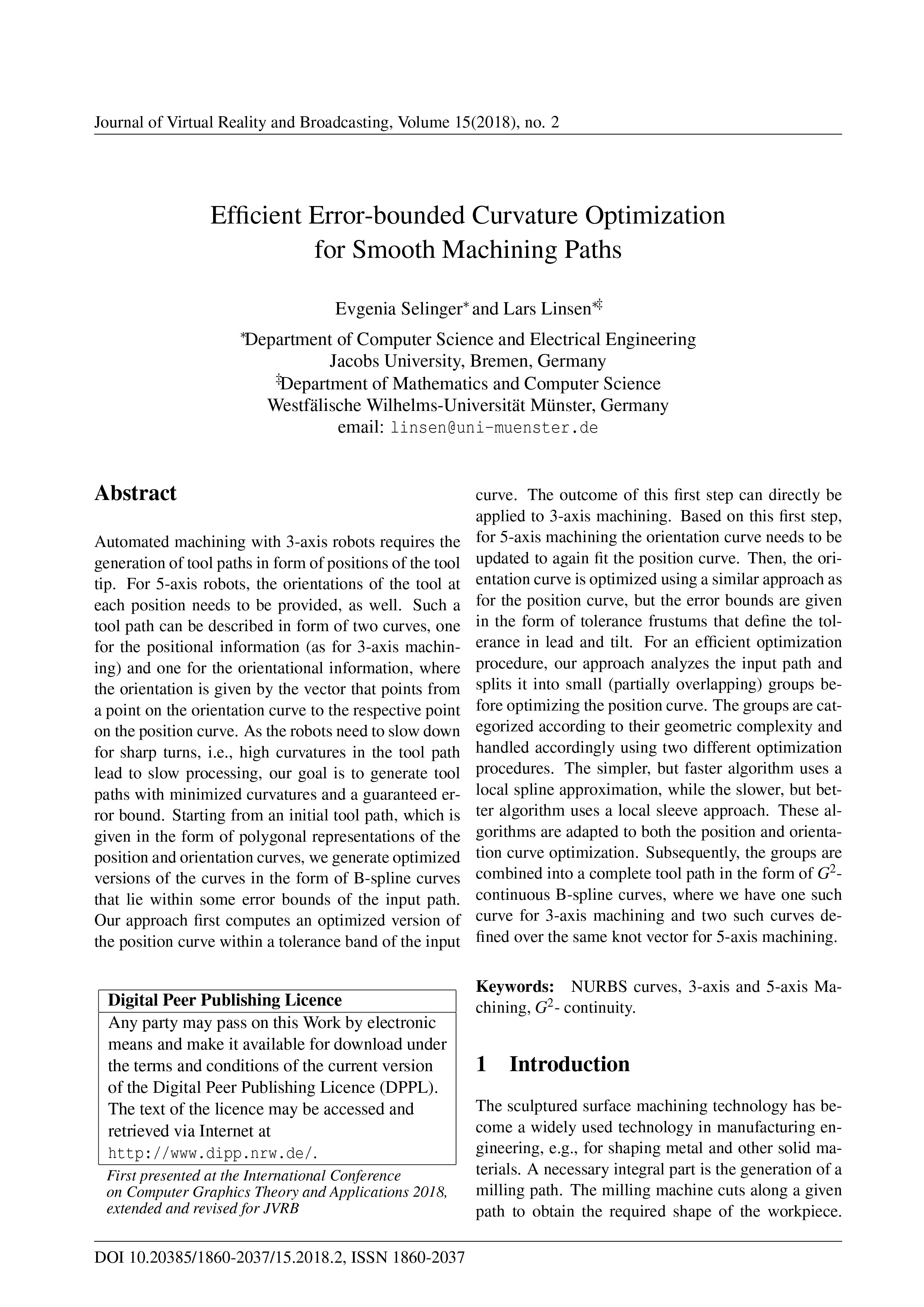Efficient Error-bounded Curvature Optimization for Smooth Machining Paths
DOI:
https://doi.org/10.20385/1860-2037/15.2018.2Keywords:
3-axis matching, 5-axis matching, NURBS curves, g²-continuity, machiningAbstract
Automated machining with 3-axis robots requires the generation of tool paths in form of positions of the tool tip. For 5-axis robots, the orientations of the tool at each position needs to be provided, as well. Such a tool path can be described in form of two curves, one for the positional information (as for 3-axis machining) and one for the orientational information, where the orientation is given by the vector that points from a point on the orientation curve to the respective point on the position curve. As the robots need to slow down for sharp turns, i.e., high curvatures in the tool path lead to slow processing, our goal is to generate tool paths with minimized curvatures and a guaranteed error bound. Starting from an initial tool path, which is given in the form of polygonal representations of the position and orientation curves, we generate optimized versions of the curves in the form of B-spline curves that lie within some error bounds of the input path. Our approach first computes an optimized version of the position curve within a tolerance band of the input curve. The outcome of this first step can directly be applied to 3-axis machining. Based on this first step, for 5-axis machining the orientation curve needs to be updated to again fit the position curve. Then, the orientation curve is optimized using a similar approach as for the position curve, but the error bounds are given in the form of tolerance frustums that define the tolerance in lead and tilt. For an efficient optimization procedure, our approach analyzes the input path and splits it into small (partially overlapping) groups before optimizing the position curve. The groups are categorized according to their geometric complexity and handled accordingly using two different optimization procedures. The simpler, but faster algorithm uses a local spline approximation, while the slower, but better algorithm uses a local sleeve approach. These algorithms are adapted to both the position and orientation curve optimization. Subsequently, the groups are combined into a complete tool path in the form of G2- continuous B-spline curves, where we have one such curve for 3-axis machining and two such curves defined over the same knot vector for 5-axis machining.
Downloads
Published
2019-07-17
Issue
Section
VISIGRAPP 2018





